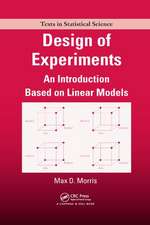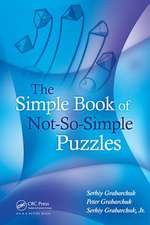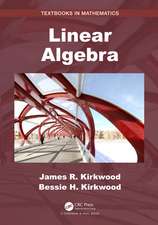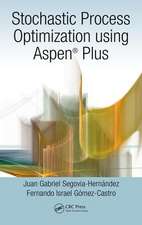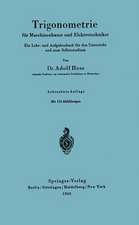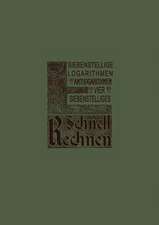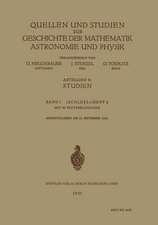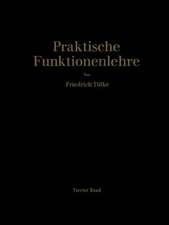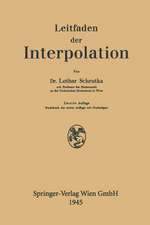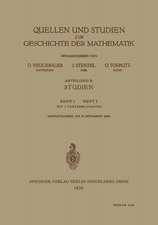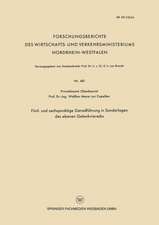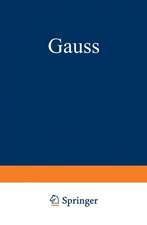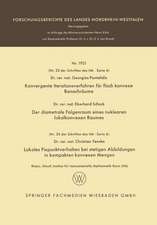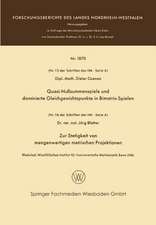Origami Design Secrets
en Limba Engleză Paperback – 23 sep 2003
Preț: 287.26 lei
Preț vechi: 324.59 lei
-12% Nou
Puncte Express: 431
Preț estimativ în valută:
54.97€ • 57.39$ • 45.49£
54.97€ • 57.39$ • 45.49£
Carte tipărită la comandă
Livrare economică 04-15 aprilie
Preluare comenzi: 021 569.72.76
Specificații
ISBN-13: 9781568811949
ISBN-10: 1568811942
Pagini: 594
Dimensiuni: 216 x 279 x 25 mm
Greutate: 1.7 kg
Editura: TAYLOR & FRANCIS LTD
ISBN-10: 1568811942
Pagini: 594
Dimensiuni: 216 x 279 x 25 mm
Greutate: 1.7 kg
Editura: TAYLOR & FRANCIS LTD
Recenzii
"… finally, the secrets of an origami master are revealed! It feels like Lang has taken you on as an apprentice as he teaches you his techniques, stepping you through examples of real origami designs and their development. -Erik Demaine, October 2003
Robert J. Lang, author of Origami Design Secrets: Mathematical Methods for an Ancient Art, was featured as part of a recent article in the Science section of the New York Times. -New York Times , June 2004
For most origami enthusiasts, the ancient Japanese art of folding and making creases is a mere hobby, and a grand pursuit for those giddily obsessed with the mathematics (or aesthetics) of how mere paper can be contorted into objects of beauty and interest. For Robert J. Lang, however, origami has become a life's pursuit . . . -Chad Berndtson, The Patriot Ledger , November 2004
""There is something for everyone here, whether beginner or expert, left-brained or right, specialist or dilettante."" -Gail Anderson, Engineering & Science, April 2003
""This magisterial work, splendidly produced, covers all aspects of the art and science."" -SIAM Book Review, November 2004
""Origami may seem an unusual route to a prestigious university job, but most things about Dr. Erik Demaine defy academic norms."" -Margaret Wertheim, The New York Times , February 2005
Young Scientist Sees Origami as the Shape of Things to Come -Margaret Wertheim, The New York Times , February 2005
""This book is a synthesis of origami technique, history, and instructions, with very thoughtful and clear explanations for almost every aspect of the art of folding and designing origami."" -Sarah Gourlie, Math Horizons, January 2006
When Robert J. Lang, a laser physicist, talks with passion about origami — the Japanese art of paper folding — the line between play and discovery also completely dissolves. Mr. Lang is what might be called an origamist (see www.langorigami.com). He wrote the book ""Origami Design Secrets: Mathematical Methods for an Ancient Art"" (AK Peters, 2003) and has created tarantulas, delicate herons, 12-spined shells and big-horned elk out of single, uncut, folded sheets of paper. -Edward Rothstein, The New York Times , April 2006
Susan Orlean profiles Robert J. Lang in ""The Origami Lab: Why a physicist dropped everything for paper folding""
""The first part of his plan was to write the book he'd been contemplating while still at JDS Uniphase -- Origami Design Secrets, which was published in 2003 and lays out the underlying principles of origami and desgin techniques."" -Susan Orlean, The New Yorker, February 2007
The Times Magazine asked 10 artists to design ""green"" flags to illustrate Thomas L. Friedman's cover story. Here's how origami artist Robert J. Lang created his flag. -The New York Times Magazine , April 2007
""Now meet Robert Lang. When he folds paper, he doesn't just make objects, he creates art. He's able to see paper differently than the rest of us.""
Watch the video from CBS Sunday Morning -CBS Morning News, May 2007
""Through the years I was a professional physicist, I found that the tools I had learned doing physics and engineering—the mathematics and the approach to breaking down problems and studying the underlying theory—could be applied to origami as well. So that helped me to develop my origami art to a fairly high level. ""
Cabinet, Issue 17 -Margaret Wertheim, May 2005
""Lang chose to strike a balance between a book that describes origami design algorithmically and one that appeals to the origami community. . . . For mathematicians and origamists alike, Lang's expository approach introduces the reader to technical aspects of folding and the mathematical models with clarity and good humor. . . . Origami Design Secrets . . . is highly recommended for mathematicians and students alike who want to view, explore, wrestle with open problems in, or even try their own hand at the complexity of origami model design."" -Thomas C. Hull, The Mathematical Intelligencer , March 2005
Robert Lang Sheds Light on the Math That Underlies Origami: See the link above for an article about Robert Lang's MAA Carriage House lecture ""From Flapping Birds to Space Telescopes,"" including links to an interview with Robert Lang and an audio file of the lecture. -MAA Online, July 2009"
Robert J. Lang, author of Origami Design Secrets: Mathematical Methods for an Ancient Art, was featured as part of a recent article in the Science section of the New York Times. -New York Times , June 2004
For most origami enthusiasts, the ancient Japanese art of folding and making creases is a mere hobby, and a grand pursuit for those giddily obsessed with the mathematics (or aesthetics) of how mere paper can be contorted into objects of beauty and interest. For Robert J. Lang, however, origami has become a life's pursuit . . . -Chad Berndtson, The Patriot Ledger , November 2004
""There is something for everyone here, whether beginner or expert, left-brained or right, specialist or dilettante."" -Gail Anderson, Engineering & Science, April 2003
""This magisterial work, splendidly produced, covers all aspects of the art and science."" -SIAM Book Review, November 2004
""Origami may seem an unusual route to a prestigious university job, but most things about Dr. Erik Demaine defy academic norms."" -Margaret Wertheim, The New York Times , February 2005
Young Scientist Sees Origami as the Shape of Things to Come -Margaret Wertheim, The New York Times , February 2005
""This book is a synthesis of origami technique, history, and instructions, with very thoughtful and clear explanations for almost every aspect of the art of folding and designing origami."" -Sarah Gourlie, Math Horizons, January 2006
When Robert J. Lang, a laser physicist, talks with passion about origami — the Japanese art of paper folding — the line between play and discovery also completely dissolves. Mr. Lang is what might be called an origamist (see www.langorigami.com). He wrote the book ""Origami Design Secrets: Mathematical Methods for an Ancient Art"" (AK Peters, 2003) and has created tarantulas, delicate herons, 12-spined shells and big-horned elk out of single, uncut, folded sheets of paper. -Edward Rothstein, The New York Times , April 2006
Susan Orlean profiles Robert J. Lang in ""The Origami Lab: Why a physicist dropped everything for paper folding""
""The first part of his plan was to write the book he'd been contemplating while still at JDS Uniphase -- Origami Design Secrets, which was published in 2003 and lays out the underlying principles of origami and desgin techniques."" -Susan Orlean, The New Yorker, February 2007
The Times Magazine asked 10 artists to design ""green"" flags to illustrate Thomas L. Friedman's cover story. Here's how origami artist Robert J. Lang created his flag. -The New York Times Magazine , April 2007
""Now meet Robert Lang. When he folds paper, he doesn't just make objects, he creates art. He's able to see paper differently than the rest of us.""
Watch the video from CBS Sunday Morning -CBS Morning News, May 2007
""Through the years I was a professional physicist, I found that the tools I had learned doing physics and engineering—the mathematics and the approach to breaking down problems and studying the underlying theory—could be applied to origami as well. So that helped me to develop my origami art to a fairly high level. ""
Cabinet, Issue 17 -Margaret Wertheim, May 2005
""Lang chose to strike a balance between a book that describes origami design algorithmically and one that appeals to the origami community. . . . For mathematicians and origamists alike, Lang's expository approach introduces the reader to technical aspects of folding and the mathematical models with clarity and good humor. . . . Origami Design Secrets . . . is highly recommended for mathematicians and students alike who want to view, explore, wrestle with open problems in, or even try their own hand at the complexity of origami model design."" -Thomas C. Hull, The Mathematical Intelligencer , March 2005
Robert Lang Sheds Light on the Math That Underlies Origami: See the link above for an article about Robert Lang's MAA Carriage House lecture ""From Flapping Birds to Space Telescopes,"" including links to an interview with Robert Lang and an audio file of the lecture. -MAA Online, July 2009"

